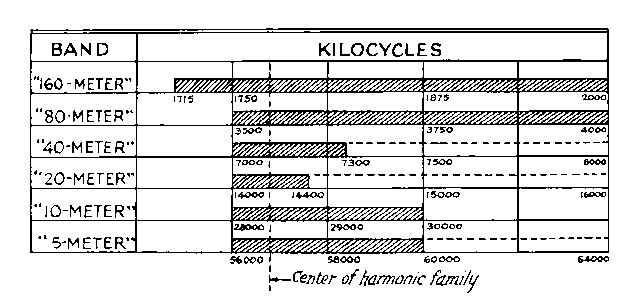5 Meter Ham Radio Band
There currently is no 5 Meter Ham Radio Band. The nomenclature is for historical reference to a frequency range that was once available to the U.S. amateur radio operator, from 56MHz to 64MHz.
On October 10, 1924, the 5-meter band, 56-64 MHz, was first made available to amateurs in the United States by the Third National Radio Conference. On October 4, 1927, the band was allocated on a worldwide basis by the International Radiotelegraph Conference in Washington, D.C.
After World War 2 there was some frequency allocation changes made by the FCC. On March 1, 1946 the FCC moved a television broadcast frequency into the 5-Meter ham band. FCC Order 130-C on March 1, 1946 and created the 6-meter band allocation for the amateur service as 50-54 MHz. The 5-Meter band was officially gone forever for the ham operator, replaced by the new 6 Meter Ham Radio Band.

September 1928 QST - An expression of band widths relative to frequency and harmonics. Note the 5-meter ham radio band.
It was in 1927 when the U.S. was pressured into the use of frequency instead of wavelength in defined allocations. Even though this is the official policy, the amateur bands are still referred to by their wavelength designation.